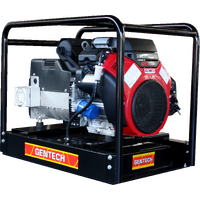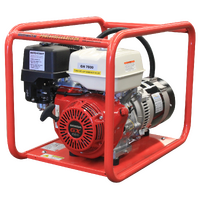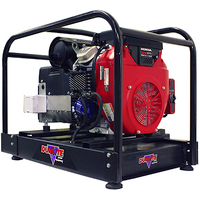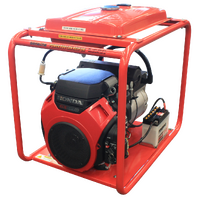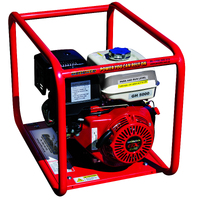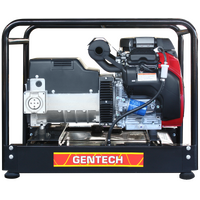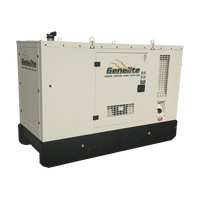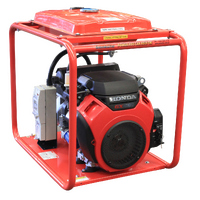Three Phase Generators

kVA
Standby kVA
- 11
- 12.50
- 13.8
- 14
- 14.3
- 14.50
- 15.4
- 16
- 16.5
- 17
- 19.8
- 21
- 22
- 25
- 30
- 32.5
- 33
- 34
- 44
- 45
- 48
- 50
- 55
- 63
- 65
- 66
- 88
- 90
- 110
- 125
- 143
- 165
- 200
- 212
- 220
- 275
Brand
Product Category
- Genelite Stationary Generators
- Himoinsa Generators
- Kubota Generators
- Portable Generators
- Pramac Stationary Range
Filter By Price Range
- $8,000 or below
- $8,000 to $16,000
- $16,000 to $24,000
- $24,000 to $32,000
- $32,000 or above
Price
Product Category
-
- Pramac Stationary Range
- Portable Generators
- Kubota Generators
- Himoinsa Generators
- Genelite Stationary Generators
Brand
-
- Pramac
- Powerlite
- OzPower
- Mosa
- Makinex
- Kubota
- Hyundai
- Himoinsa
- Gentech
- Genelite
- Dunlite
Standby kVA
-
- 275
- 220
- 212
- 200
- 165
- 143
- 125
- 110
- 90
- 88
- 66
- 65
- 63
- 55
- 50
- 48
- 45
- 44
- 34
- 33
- 32.5
- 30
- 25
- 22
- 21
- 19.8
- 17
- 16.5
- 16
- 15.4
- 14.50
- 14.3
- 14
- 13.8
- 12.50
- 11
kVA
-
- 32
- 23
- 18
- 16
- 15
- 14.5
- 13.9
- 12.5
- 12
- 11
- 10.8
- 10
- 8
- 7.5
- 7
- 6.8
- 6.5
- 6
- 5.5
- 5
Filter By Brand
- Dunlite (5)
- Genelite (30)
- Gentech (4)
- Himoinsa (13)
- Hyundai (10)
- Kubota (6)
- Makinex (4)
- Mosa (4)
- OzPower (2)
- Powerlite (13)
- Pramac (6)
Filter By Stock
Best Sellers
Three Phase Generators
kVA
Standby kVA
- 11
- 12.50
- 13.8
- 14
- 14.3
- 14.50
- 15.4
- 16
- 16.5
- 17
- 19.8
- 21
- 22
- 25
- 30
- 32.5
- 33
- 34
- 44
- 45
- 48
- 50
- 55
- 63
- 65
- 66
- 88
- 90
- 110
- 125
- 143
- 165
- 200
- 212
- 220
- 275
Brand
Product Category
- Genelite Stationary Generators
- Himoinsa Generators
- Kubota Generators
- Portable Generators
- Pramac Stationary Range
Price
Product Category
-
- Pramac Stationary Range
- Portable Generators
- Kubota Generators
- Himoinsa Generators
- Genelite Stationary Generators
Brand
-
- Pramac
- Powerlite
- OzPower
- Mosa
- Makinex
- Kubota
- Hyundai
- Himoinsa
- Gentech
- Genelite
- Dunlite
Standby kVA
-
- 275
- 220
- 212
- 200
- 165
- 143
- 125
- 110
- 90
- 88
- 66
- 65
- 63
- 55
- 50
- 48
- 45
- 44
- 34
- 33
- 32.5
- 30
- 25
- 22
- 21
- 19.8
- 17
- 16.5
- 16
- 15.4
- 14.50
- 14.3
- 14
- 13.8
- 12.50
- 11
kVA
-
- 32
- 23
- 18
- 16
- 15
- 14.5
- 13.9
- 12.5
- 12
- 11
- 10.8
- 10
- 8
- 7.5
- 7
- 6.8
- 6.5
- 6
- 5.5
- 5
Filter By Brand
- Dunlite (5)
- Genelite (30)
- Gentech (4)
- Himoinsa (13)
- Hyundai (10)
- Kubota (6)
- Makinex (4)
- Mosa (4)
- OzPower (2)
- Powerlite (13)
- Pramac (6)
Filter By Stock
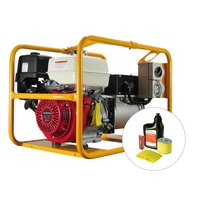
Powerlite 3 Phase 8kVA Generator, 2 Year + 1 Year Alternator Warranty
$3,549 RRP: $4,565 Save: $1,016
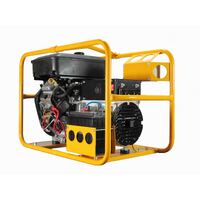
Powerlite Briggs & Stratton Vanguard 11kVA Three Phase Generator, 2 Year + 1 Year Alternat
$5,949 RRP: $7,601 Save: $1,652
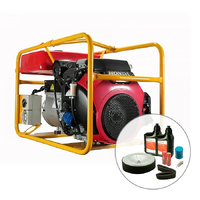
Powerlite Honda 3 Phase 15kva Generator, 2 Year + 1 Year Alternator Warranty
$7,199 RRP: $8,910 Save: $1,711
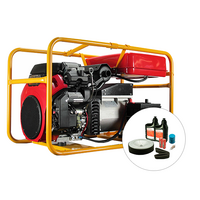
Powerlite Honda 3 Phase 12kva Generator, 2 Year + 1 Year Alternator Warranty
$6,999 RRP: $8,679 Save: $1,680
Best Sellers From This Category:

Powerlite 3 Phase 8kVA Generator, 2 Year + 1 Year Alternator Warranty
$3,549 RRP: $4,565 Save: $1,016

Powerlite Briggs & Stratton Vanguard 11kVA Three Phase Generator, 2 Year + 1 Year Alternat
$5,949 RRP: $7,601 Save: $1,652

Powerlite Honda 3 Phase 15kva Generator, 2 Year + 1 Year Alternator Warranty
$7,199 RRP: $8,910 Save: $1,711

Powerlite Honda 3 Phase 12kva Generator, 2 Year + 1 Year Alternator Warranty
$6,999 RRP: $8,679 Save: $1,680
Three Phase Generators – Reliable Power For Industrial And Commercial Applications
At My Generator, we offer a premium selection of portable and stationary three phase generators designed for industrial, commercial, and backup power needs. Whether you need a three phase generator for a construction site, factory, agricultural operation, or large-scale infrastructure project, our range provides dependable and fuel-efficient power solutions. These generators deliver consistent, high-output electricity, making them essential for businesses that cannot afford interruptions to their power supply.
Powering Industry: Explore Our Range Of Three Phase Generators
Our collection of three phase generators includes both portable and stationary models across a wide range of power outputs to suit various applications:
- 10 to 50kVA 3 Phase Generator – Ideal for small to medium-sized businesses, construction sites, and temporary power solutions. These versatile units are compact and efficient while delivering reliable three phase power for tools, machinery, and essential equipment.
- 50kVA to 250kVA 3 Phase Generator – Designed for larger commercial operations, warehouses, and heavy-duty industrial applications. These generators offer robust, continuous power to keep essential operations running smoothly.
- 250kVA Plus 3 Phase Generator – Engineered for large-scale industries, data centres, and major infrastructure projects. These high-capacity units provide the uninterrupted power required for mission-critical environments and 24/7 operations.
We stock industry-leading brands, including Genelite, Himoinsa,Hyundai, Kubota, OZPower, and Pramac, ensuring superior quality and performance. Both our portable and stationary three phase generators are built for durability, efficiency, and compliance with Australian industry standards. Whether you need a generator for a short-term project or a permanent backup power solution, My Generator has the right option to meet your demands.
Why Choose My Generator For Your Three Phase Generator Needs?
At My Generator, we understand that reliable power is crucial for industrial and commercial applications. That’s why we provide a comprehensive range of three phase generators, including portable units for flexible use and large stationary models for long-term power supply. Our expert team, based on the Gold Coast, is here to help you choose the best generator to match your requirements. Contact us on 1300 400 122 for expert advice or explore our extensive online selection today.
Three Phase Generators FAQs:
-
1. What Are the Advantages of Using Three Phase Generators for Industrial Applications?
A three phase generator provides consistent, high-efficiency power that is ideal for industrial and commercial applications. It offers balanced load distribution, reducing energy loss and enhancing performance for heavy machinery, construction sites, and large-scale operations. At My Generator, we supply a premium range of three phase generators from trusted brands like Kubota, Pramac, and Genelite to ensure you have reliable power when you need it most.
-
2. How Do I Choose the Right kVA Rating for a Three Phase Generator?
Choosing the correct kVA rating depends on your total power requirements. Consider the combined wattage of all equipment you need to run, whether continuously or intermittently. For smaller operations, a 10-50kVA generator may be sufficient, while larger businesses may require 250kVA or more. My Generator’s experienced team can guide you in selecting the best three phase generator for your needs—call us on 1300 400 122 for assistance.
-
3. Do Three Phase Generators Require Regular Maintenance?
Yes, regular maintenance is essential to ensure the longevity and optimal performance of a three phase generator. Routine servicing includes oil changes, fuel system inspections, and load testing to prevent breakdowns. Brands like Himoinsa and Hyundai design their three phase generators for durability, but scheduled maintenance is key to maintaining efficiency. My Generator provides reliable, high-quality generators that deliver consistent power with minimal upkeep.
